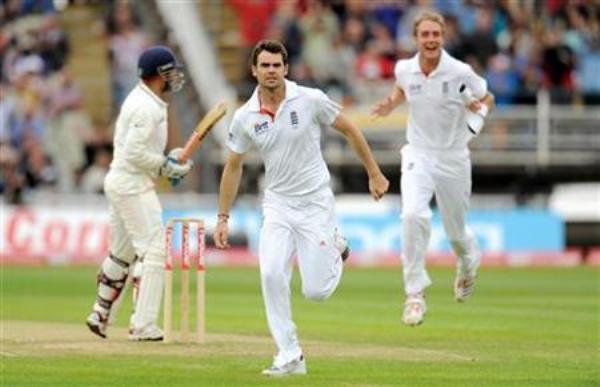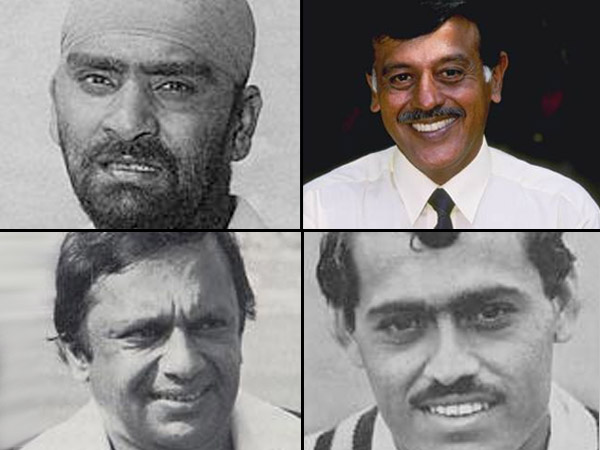
Has Indian Test cricket suffered under Dhoni?
Indian Test cricket is undergoing a decline and the foundation laid by Tiger Pataudi is collapsing under MS Dhoni.
The venom of glamour and entertainment infused with cricket has made a cascading impact on its purest format, as it seems to lose its essence in this fast-track age of madness.
As always Indian cricket has struggled to cope with any kind of fast bowling overseas. The superstars that Indian cricket has produced over the years have managed to excel on slow tracks of the subcontinent but succumbed to the fast bouncy tracks elsewhere.
Mahendra Singh Dhoni and his team have suffered humiliating defeats in Test matches over the past four years. After surrendering to complete wash-outs in England in 2011, his lacklustre side suffered almost similar losses in South Africa, New Zealand and recently at the hands of an average English side. Experts and former cricketers have fired all bullets at the skipper’s end, dismissing his defensive on-field strategies as obnoxious and absurd. This view persists despite him having achieved coveted prizes in limited-over formats like the 2011 World Cup and the 2013 Champions Trophy.
 England's James Anderson celebrates after dismissing India's Virender Sehwag (L) for 0 as Stuart Broad (R) looks on during the third cricket test match at Edgbaston cricket ground in Birmingham, England August 12, 2011. Photo: Reuters
England's James Anderson celebrates after dismissing India's Virender Sehwag (L) for 0 as Stuart Broad (R) looks on during the third cricket test match at Edgbaston cricket ground in Birmingham, England August 12, 2011. Photo: ReutersDhoni is a sound decision-maker – cool, emotionally balanced and stoic in many ways. Ever since he’s been appointed to lead the national side, his Midas touch has produced outstanding results in shorter versions of the game. However, cricket’s longer format appears to be his Achilles heel.
When a side goes through a phase of transition, leadership matters. Bullies are easy to lick but when times are harsh and the chips are down, it takes more than just good captaincy to resolve matters. Captaining India is a Herculean task. Although captaining any team is not easy, India is particularly difficult because of its diversity. Dhoni needs to be pretty strong on his strategy and tactics, and understand the finer points of the game; moreover, his teammates have to be convinced that their leader understands the game better than they do.
India’s resurgence in the world of cricket as a force to reckon with lit up in the sixties, largely under the leadership of a young, aggressive and flamboyant Oxford-educated prince-turned-cricketer, Nawab of Pataudi Jr, cited as the ‘greatest Indian captain ever’.
 Tiger Pataudi
Tiger PataudiIn the midst of the rugged Caribbean series in 1962 when the then captain, Nari Contractor, was forced to retire from the tour after suffering a blow on his head against West Indian pacer Charlie Griffith’s bouncer, the selectors had rushed in a 21-year-old Pataudi as an emergency skipper. Little did they know then that this match was to kick start a path-breaking chapter in the history of Indian Test cricket.
India had just achieved independence and, like the new nation, its players too were lacking a certain amount of confidence, especially against the ‘white’ teams. The side feared facing fast bowlers, their fielding standards were dismal. Pataudi instilled his team with confidence, trained his men hard and managed to dissolve the inferiority complex. His first duty was to read, study and analyse the psyche of his players.
He had to know them personally and worked towards their strength. To him, instinct was a mixture of experience and common sense. Pataudi himself had battled out of a fatal car accident while as a student at Oxford, which permanently damaged his right eye. Most feared that would end his cricketing career, but in just a few weeks’ time, young Pataudi was back in the nets. His brave exploits earned him the nickname ‘Tiger’.
Pataudi’s team was not the glamorous, swashbuckling million-dollar babies that Dhoni is blessed with today. Cricket never looked lucrative in those days, corporate tycoons didn’t bother to even sniff it; in fact teams didn’t even have this much money to buy a player’s kit. Most of the cricketers worked in private and state-owned companies and played cricket mainly as a passion.
Tiger Pataudi’s greatest achievement was in developing highly effective spin attacks. He believed that spin was India’s greatest strength, and introduced the famous quartet, comprising Bishen Singh Bedi, Srinivasaraghavan Venkataraghavan, Erapalli Prasanna and BS Chandrasekhar. His best stint as a captain came in the twin tours of Australia and New Zealand in 1967-68. There were no super stars or god-like characters in the side, apart from a few reliable batsmen and good quality spinners. And most notable in those days is that there was nothing covering their heads, chests, thighs or arms.
 Top (left to right): Bishen Singh Bedi, Srinivasaraghavan Venkataraghavan. Bottom (left to right): Erapalli Prasanna and BS Chandrasekhar
Top (left to right): Bishen Singh Bedi, Srinivasaraghavan Venkataraghavan. Bottom (left to right): Erapalli Prasanna and BS ChandrasekharPlaying the hostile Australian pace-attack, with the likes of Garth Mckenzie and Alan Connolly, without helmets or efficient body guards was never going to be easy. At Melbourne, in the second Test match, adding to his handicapped vision, Pataudi had injured his foot but nevertheless joined all-rounder Rusi Surti to defy the maverick-paced bowling and helped reel India to nurture the collapse – with a score of 75 and 85 in both innings. A journalist called this match the “innings of one eye and one leg”. Although India lost all four Test matches, they came close and fought well. The tour helped them set up a historic 3-1 series triumph in New Zealand in the following weeks, making it the first ever overseas series triumph for India.
Pataudi’s legacy followed years after his axing from the side; the groundwork he laid duly assisted future captains. Unfortunately, at this point, Indian Test cricket is experiencing a steady decline and the foundation laid by Tiger Pataudi is effectively collapsing under the leadership of an iconic ODI player and skipper Dhoni.
 MS Dhoni. Photo: Reuters
MS Dhoni. Photo: ReutersThe team seems to be high on an overdose of glamour and glitter, signing remunerative contracts in dubious cricket formats sponsored by greedy corporate dons. The blood and sweat shed under Pataudi, in improving all three divisions of the game, has faded away in recent times due to the emergence of lucrative, shorter formats of the game that demand less quality and class.
Between Tiger Pataudi and MS Dhoni, Indian Test cricket history will mark this period of over fifty years as both crux and crucial, from its rise during the former’s era to its descent under the latter’s reign.




COMMENTS (3)
Comments are moderated and generally will be posted if they are on-topic and not abusive.
For more information, please see our Comments FAQ